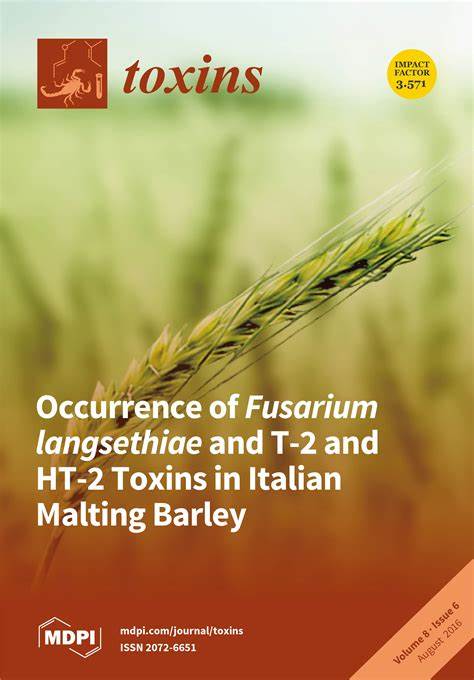分子筛选不同生境中的蓝藻及其蓝藻毒素潜力
IF 4
3区 医学
Q2 FOOD SCIENCE & TECHNOLOGY
引用次数: 0
摘要
蓝藻是一种适应性很强的优势生物,由于具有很强的生态耐受性,它们可以在许多恶劣和极端的环境中生存。它们产生各种次级代谢产物,包括蓝藻毒素。虽然蓝藻在地表水和一些空中栖息地的研究较多,但对许多其他栖息地和壁龛的研究仍然不足。我们收集了 61 份样本:(i) 泉水中的生物膜;(ii) 建筑物中的空中微生物垫和洞穴中的地下微生物垫;(iii) 来自五个国家(克罗地亚、格鲁吉亚、意大利、塞尔维亚和斯洛文尼亚)的井水、洞穴水、碱性泉水、盐水、硫酸泉水、热泉和铁泉、河水、海水和融化的洞穴冰。我们使用 (q)PCR 技术检测蓝藻(藻蓝蛋白基因间间隔-PC-IGS 和蓝藻特异性 16S rRNA 基因)和蓝藻毒素基因(微囊藻毒素-mcyE、藻毒素-sxtA、圆柱藻毒素-cyrJ),并通过扩增子测序和形态学观察进行分类鉴定。在洞穴、盐碱泉和碱性泉的样本中都检测到了蓝藻。虽然在任何样本中都没有观察到 mcyE 或 sxtA 基因,但 cyrJ 结果显示,在斯洛文尼亚硫酸泉的生物膜中存在一种潜在的圆柱形珠蛋白生产者。这项研究有助于我们了解蓝藻在不同生境(包括稀有和极端生境)中的发生情况,并为今后在此类环境中开展研究提供了相关的方法学考虑。本文章由计算机程序翻译,如有差异,请以英文原文为准。
Molecular Screening for Cyanobacteria and Their Cyanotoxin Potential in Diverse Habitats
Cyanobacteria are adaptable and dominant organisms that exist in many harsh and extreme environments due to their great ecological tolerance. They produce various secondary metabolites, including cyanotoxins. While cyanobacteria are well studied in surface waters and some aerial habitats, numerous other habitats and niches remain underexplored. We collected 61 samples of: (i) biofilms from springs, (ii) aerial microbial mats from buildings and subaerial mats from caves, and (iii) water from borehole wells, caves, alkaline, saline, sulphidic, thermal, and iron springs, rivers, seas, and melted cave ice from five countries (Croatia, Georgia, Italy, Serbia, and Slovenia). We used (q)PCR to detect cyanobacteria (phycocyanin intergenic spacer—PC-IGS and cyanobacteria-specific 16S rRNA gene) and cyanotoxin genes (microcystins—mcyE, saxitoxins—sxtA, cylindrospermopsins—cyrJ), as well as amplicon sequencing and morphological observations for taxonomic identification. Cyanobacteria were detected in samples from caves, a saline spring, and an alkaline spring. While mcyE or sxtA genes were not observed in any sample, cyrJ results showed the presence of a potential cylindrospermopsin producer in a biofilm from a sulphidic spring in Slovenia. This study contributes to our understanding of cyanobacteria occurrence in diverse habitats, including rare and extreme ones, and provides relevant methodological considerations for future research in such environments.
求助全文
通过发布文献求助,成功后即可免费获取论文全文。
去求助
来源期刊

Toxins
TOXICOLOGY-
CiteScore
7.50
自引率
16.70%
发文量
765
审稿时长
16.24 days
期刊介绍:
Toxins (ISSN 2072-6651) is an international, peer-reviewed open access journal which provides an advanced forum for studies related to toxins and toxinology. It publishes reviews, regular research papers and short communications. Our aim is to encourage scientists to publish their experimental and theoretical results in as much detail as possible. There is no restriction on the length of the papers. The full experimental details must be provided so that the results can be reproduced.
 求助内容:
求助内容: 应助结果提醒方式:
应助结果提醒方式:


